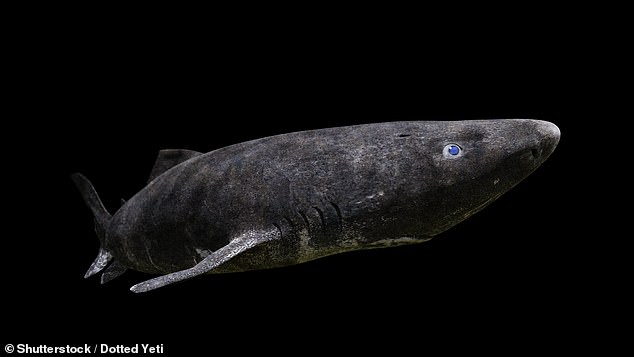While you may be well aware of the dangers posed by a tiger, bull, or Great White shark, would you know what to do when face to face with a megamouth shark?
Our oceans have an estimated 90 per cent of species still undiscovered yet people don’t even know the species that have been revealed.
There are over 500 species of shark and yet the average person, even those who claim sharks as their favourite animal, fail to name more than five, with those five being the same species recycled from person to person.
Great White, bull, hammerhead, tiger, and whale sharks are all heavily regarded as the most popular sharks, with movies such as Jaws greatly boosting their fame.
However, other, arguably more interesting, sharks remain lurking far beneath the surface.
With over eight billion people, surely all 500+ shark species deserve to be somebody’s favourite.
From scary to sweet, these are five of the most underrated sharks to add to your list of favourites.

The Greenland shark can live up to 500 years
Greenland shark
The Greenland shark is far too underrated considering the absolute marvel of its lifespan, having baffled scientists for years as the oldest shark.
Due to their particularly slow metabolism, delayed sexual maturity, and cold Arctic water habitats 2,000m below the surface, the Greenland shark has adapted to have a lifespan of up to 500 years.
In 2016, carbon dating of a Greenland shark’s eye lenses revealed it was from 1627 and was almost 400 years old.
However, you needn’t fear these gentle giants, as they are also the slowest-moving shark with a top speed of 2.5km/h. And even if you were to be caught up, you’d be more at risk if you took a bite out of the shark than if it were to bite you.
The high count of trimethylamine oxide in their flesh, which can cause cancer and heart diseases, leaves the Greenland shark completely toxic to consume, making the 1,000kg of meat more dangerous than their fifty-two teeth.

Wobbegong sharks are excellent at hiding despite being 10ft long
Wobbegong sharks
Wobbegong is the name given to carpet sharks, bottom-dwellers best known for their impeccable camouflage and interesting distinctive features. Due to their intricate patterns and skin folds, carpet sharks are able to seamlessly blend into coral reefs along the seabed.
This aids them in hiding but also hunting, with their ability to hide allowing them to easily strike and capture their prey, making them efficient ambush hunters.
This hunting advantage is highly successful as the wobbegong, similarly to the Greenland shark, are slow swimmers.
Their innate ability to ‘disappear’ into coral reefs is made even more impressive when you consider their grand size of 10ft.

Megamouths spend most of their time 15,000ft below the surface of the ocean
Megamouth sharks
The megamouth shark is often overshadowed by whale and basking sharks, its fellow plankton-eating species, however it has no reason to be as the megamouth is far more unique than its popular counterparts.
While the megamouth has been known to swim closer towards the surface for feeding at night, it spends the majority of its time 15,000ft below the surface. This has caused it to be the rarest spotted shark, with only 117 documented sightings.
However, if you were lucky enough to spot one of these creatures you would know immediately, as the megamouth has one of the most distinctive builds of any shark.
And whilst its appearance may initially scare you, they are easily kept at bay with a slight tap of their nose. With its bulbous head, large lips, and impressive length of 18ft, the megamouth could easily become one of the most recognisable sharks if only more people knew they existed.

Cookiecutter sharks are named after the holes they leave behind in prey
Cookiecutter sharks
The cookiecutter shark is undeniably one of the most remarkable shark species, from unique feeding techniques to its glowing stomach, all at a measly 50cm (20in).
The cookiecutter shark is named after the hole it leaves behind after it feeds.
They are ectoparasitic as they will live on the outside of their host, and can also live off of krill and small fish rather than feeding on larger lifeforms.
Many of their prey are attracted to them by their phosphorous underbelly which glows green, particularly effective due to the darkness of its natural habitat 3km below the surface of the water.
They are such efficient predators because of their powerful jaws and bone structure, strengthened by their tendency to swallow their own teeth as a way to intake calcium.

Dwarf lanternsharks are the size of a carrot
Dwarf Lanternsharks
If a fear of sharks is why you don’t want to learn more about them, then the dwarf lanternshark is perfect for you.
The dwarf lanternshark is the smallest breed of shark, growing up to 21cm (just over 8in) – no bigger than a carrot. They are also bioluminescent, allowing them to glow in the deep, dark waters in which they inhabit.
While you may assume this would disadvantage them, making them stick out as an easy prey, they instead use this to lure prey to them. They are also camouflaged by the black markings that form patterns with the bioluminescent colourings.
So, if a fear of sharks is putting you off, simply think of the dwarf lantern shark as no more harmful than a glow in the dark carrot.









